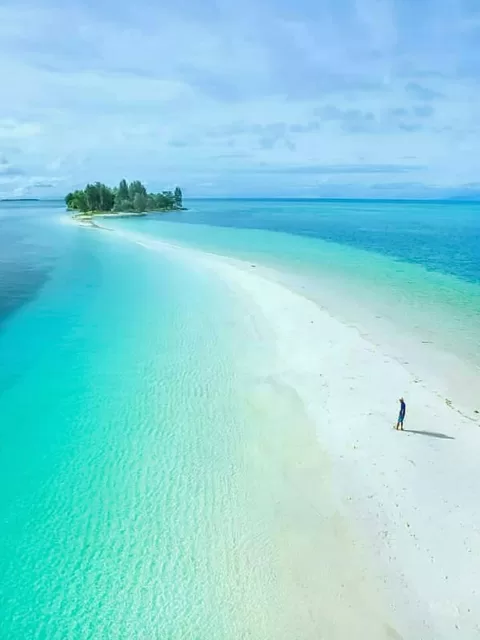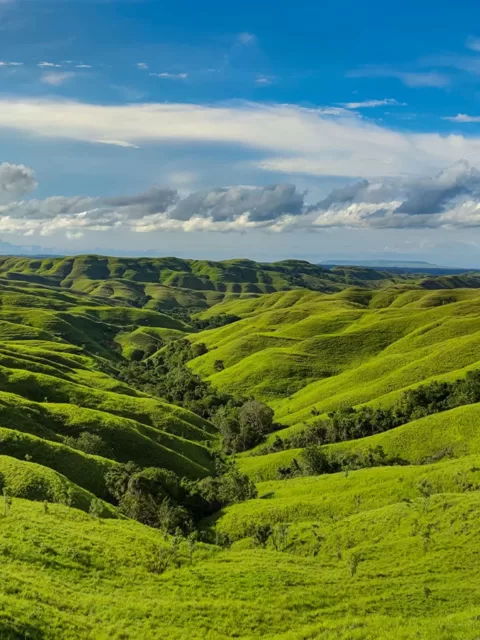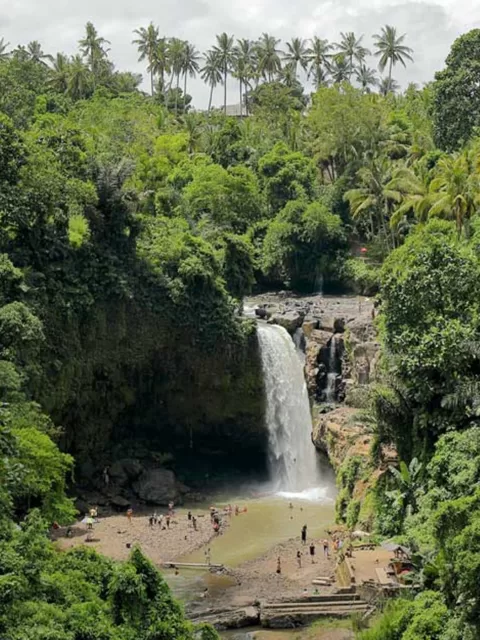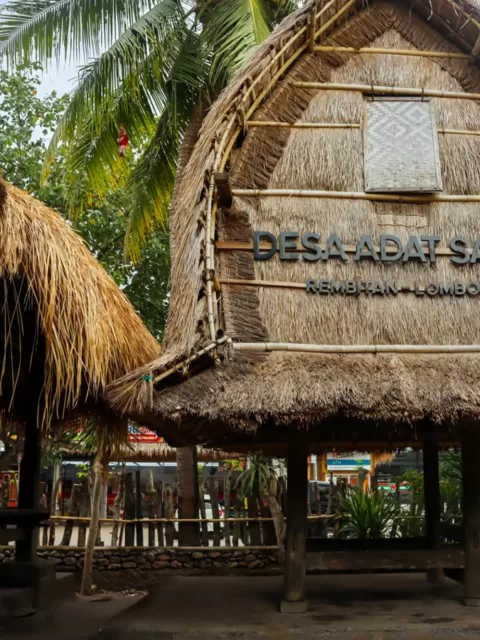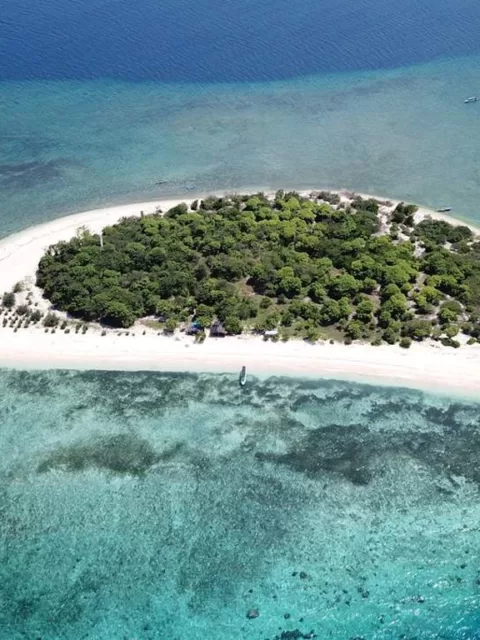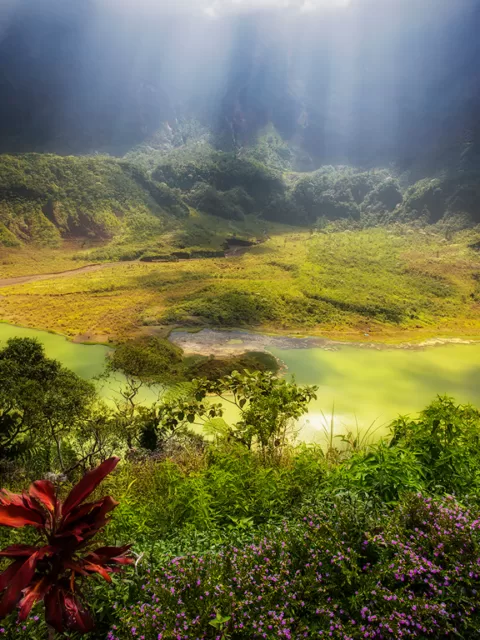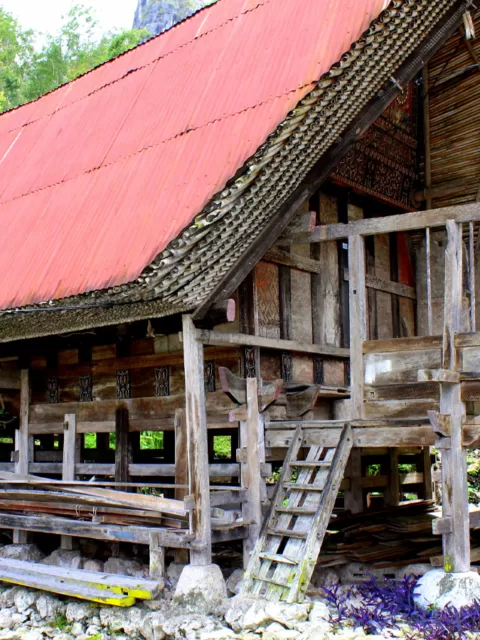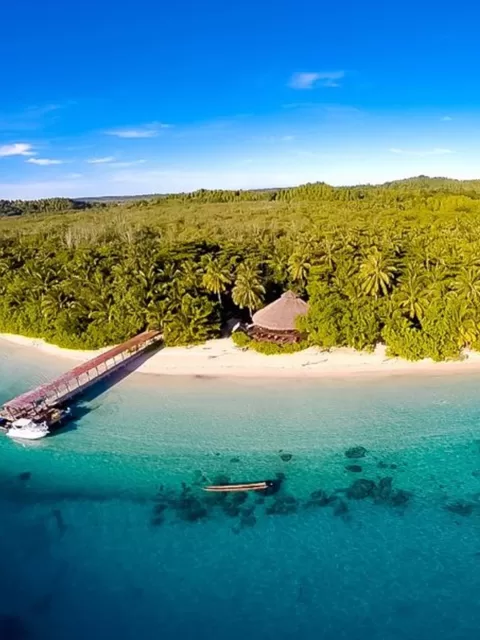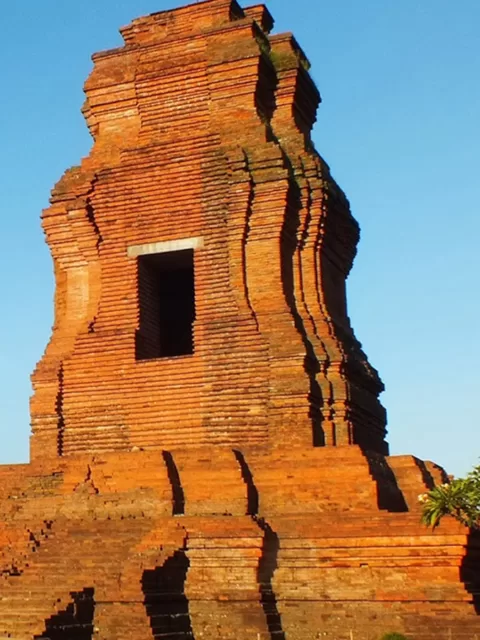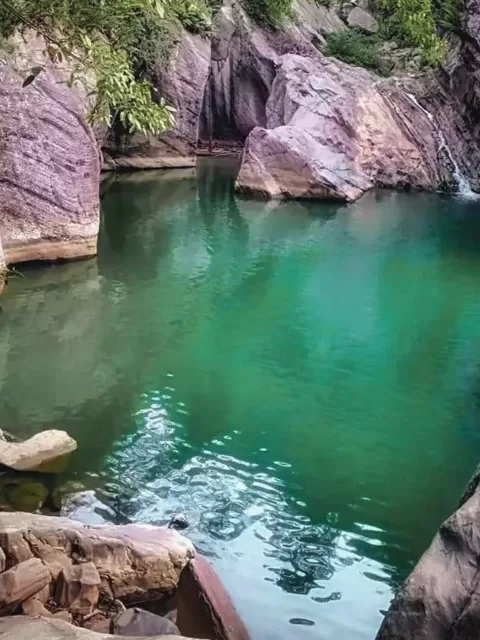Why Tourism in Jepara is Indonesia’s Best-Kept Secret
Tourism in Jepara: Unveiling the Hidden Gem of Indonesia
Jepara, a coastal town nestled along the northern shores of Central Java, Indonesia, is often overlooked by travelers in favor of its more popular neighbors. However, this hidden gem holds a treasure trove of captivating experiences, making tourism in Jepara an adventure worth embarking on.
What makes Jepara so special?
- Natural wonders: Jepara is home to a diverse array of natural attractions, from the pristine islands of Karimunjawa to the lush forests of Mount Muria. Visitors can explore cascading waterfalls, pristine beaches, and vibrant coral reefs, or embark on invigorating hikes through verdant trails.
- Cultural heritage: Jepara is a region steeped in history and culture, with a rich legacy dating back centuries. Visitors can delve into the town’s fascinating past through its museums, ancient temples, and traditional villages.
- Culinary delights: Jepara’s culinary scene is a feast for the senses, with a variety of traditional dishes to savor. Visitors can indulge in fresh seafood, savory rice dishes, and tantalizing desserts, all prepared with locally sourced ingredients.
Why is tourism in Jepara relatively unknown?
Despite its abundance of attractions, Jepara remains a relatively undiscovered destination on the global tourism map. This is likely due to a number of factors, including:
- Limited access: Jepara is not as well-connected to other major tourist destinations in Indonesia, making it more difficult to reach.
- Lack of promotion: Jepara has not received the same level of promotion as other popular tourist destinations in the country.
- Unfamiliarity: Many travelers are simply unfamiliar with Jepara and its offerings.
Why is it time to uncover hidden gems of tourism in Jepara?
Tourism in Jepara offers a unique opportunity to experience the authentic side of Indonesia. Visitors can escape the crowds and immerse themselves in the country’s rich culture and heritage while enjoying the stunning natural beauty that Jepara has to offer.
How to plan your trip to Jepara
If you’re planning a trip to Jepara, here are a few tips to help you get started:
- When to go: The best time to visit Jepara is during the dry season, which runs from May to October. During this time, the weather is sunny and dry, with clear skies and calm seas.
- How to get there: The easiest way to get to Jepara is by flying into Ahmad Yani International Airport (SRG) in Semarang, the capital of Central Java. From there, you can take a bus or taxi to Jepara. The journey takes approximately 2-3 hours.
- Where to stay: Jepara offers a variety of accommodation options to suit all budgets and preferences. From beachfront resorts to budget guesthouses, you’re sure to find the perfect place to stay.

- Things to do: Jepara has something to offer everyone, from nature lovers to history buffs to foodies. Here are a few suggestions for things to do on your trip:
- Explore the Karimunjawa Islands: Take a boat trip to the Karimunjawa National Park, a stunning archipelago of 27 islands with pristine beaches, crystal-clear waters, and vibrant coral reefs.
- Visit the Mantingan Mosque: Admire the architectural splendor of the Mantingan Mosque, a 16th-century masterpiece showcasing a blend of Javanese and Islamic architectural styles.
- Learn about RA Kartini: Visit the RA Kartini Museum to learn about the life and legacy of Raden Ajeng Kartini, a pioneer for women’s education and emancipation in Indonesia.
- Shop for Jepara wood carvings: Jepara is renowned for its wood carving industry. Visit the Jepara Sculpture Industry to see artisans at work and to purchase exquisite wood carvings and furniture.
- Sample the local cuisine: Be sure to try some of Jepara’s delicious local dishes, such as pecel ikan laut (grilled seafood with peanut sauce) and satay jepara (grilled skewered beef or chicken).
- Shop for Jepara monel crafts: Visitors to Jepara can find a wide variety of Monel crafts, including jewelry, sculptures, and tableware. Monel crafts are often decorated with intricate Javanese motifs and designs. Monel is a nickel-copper alloy that is known for its strength, durability, and resistance to corrosion.
Delving into the Alluring Charms of Jepara’s Natural Wonders
Jepara’s natural wonders are a feast for the senses, offering visitors breathtaking scenery, diverse wildlife, and endless opportunities for adventure.
Karimunjawa Islands: A Tropical Paradise Unveiled
The Karimunjawa Islands are a stunning archipelago of 27 islands located just off the coast of Jepara. These islands are known for their pristine beaches, crystal-clear waters, and vibrant coral reefs. Visitors can enjoy a variety of activities on the Karimunjawa Islands, including snorkeling, diving, swimming, sunbathing, and hiking.

One of the most popular activities on the Karimunjawa Islands is snorkeling and diving. The islands are home to a variety of marine life, including colorful fish, coral reefs, and sea turtles. Visitors can also go on boat tours to explore the surrounding waters and to visit hidden coves and beaches.
In addition to its natural beauty, the Karimunjawa Islands are also home to a number of unique cultural attractions. Visitors can visit traditional villages, learn about the local way of life, and sample the delicious local cuisine.
Karimunjawa National Park: A Marine Paradise
The Karimunjawa Islands are part of the Karimunjawa National Park, a marine paradise teeming with life. The park is home to over 27 islands, each with its own unique charm. Visitors can snorkel and dive in the crystal-clear waters to explore the vibrant coral reefs and diverse marine life. Karimunjawa National Park is also a great place to relax on the beach or go for a hike through the lush forests.
Mandalika Island: A Haven of Tranquility
Mandalika Island is a secluded island located just off the coast of Jepara. This island is known for its lush greenery, pristine beaches, and tranquil atmosphere. Visitors can relax on the beach, go for walks in the forest, or explore the island’s many hidden coves and bays.
Mandalika Island is also a great place to go birdwatching. The island is home to a variety of birds, including the Javan hawk-eagle, the Javan scops owl, and the Javan myna. Visitors can also go on boat tours to explore the surrounding waters and to visit mangrove forests.
Panjang Island: A Hidden Oasis of Serenity
Panjang Island is a hidden gem located just off the coast of Jepara. This island is known for its unspoiled beaches, serene atmosphere, and delicious seafood. Visitors can relax on the beach, go for swims in the crystal-clear waters, or explore the island’s many hidden coves and bays.
Panjang Island is also a great place to go fishing. The island is known for its abundance of fish, including tuna, snapper, and mackerel. Visitors can also go on boat tours to explore the surrounding waters and to visit nearby islands.
Unveiling the Cultural and Historical Gems of Jepara
In addition to its natural beauty, Jepara is also home to a number of cultural and historical gems. Visitors can learn about the town’s fascinating past through its museums, ancient temples, and traditional villages.
RA Kartini Museum: A Glimpse into Jepara’s Iconic Heroine
The RA Kartini Museum is a museum dedicated to the life and legacy of Raden Ajeng Kartini, a pioneer for women’s education and emancipation in Indonesia. The museum houses a collection of artifacts and photographs that tell the story of Kartini’s life and work.

Keling Beach: A Serene Escape Amidst Pristine Beauty
Nestled along the southern coast of Jepara, Keling Beach offers a tranquil escape amidst pristine natural beauty. Visitors can soak in the sun on the white sand beach, paddle in the crystal-clear waters, or explore the surrounding mangrove forests. Keling Beach is also a great place to go birdwatching and spot a variety of marine life, including dolphins and sea turtles.
Mount Muria: A Verdant Haven for Nature Lovers
Towering over Jepara, Mount Muria is a verdant haven for nature lovers. The mountain is home to a variety of flora and fauna, including waterfalls, hot springs, and lush forests. Visitors can hike to the mountain’s summit for stunning views of the surrounding countryside, or simply relax and enjoy the natural beauty.
Randu Blatung River: A Serpentine Waterway Amidst Lush Greenery
Winding its way through the heart of Jepara, the Randu Blatung River is a serpentine waterway amidst lush greenery. Visitors can take a boat trip down the river to explore the surrounding mangrove forests and wildlife. The Randu Blatung River is also a popular spot for fishing and swimming.
Air Terjun Gongso: A Majestic Waterfall in a Tropical Setting
Air Terjun Gongso is a majestic waterfall located in the heart of Mount Muria. The waterfall cascades down a towering cliff face into a natural pool below. Visitors can swim in the pool or simply relax and enjoy the scenic views. Air Terjun Gongso is a popular spot for both locals and tourists alike.
Jepara Batik: A Timeless Art Form
Jepara is known for its beautiful batik. Batik is a traditional Indonesian art form that involves dyeing fabric with wax and then using a variety of techniques to create intricate patterns. Visitors can purchase batik at various shops and markets in Jepara.
Traditional Villages: A Window into Jepara’s Rural Life
There are a number of traditional villages located in Jepara that offer visitors a glimpse into the town’s rural life. Visitors can visit these villages to learn about the local culture and traditions, and to sample the delicious local cuisine.
Jepara Sculpture Industry: A Journey into Artistic Traditions
The Jepara wood carving industry is a centuries-old tradition that is still thriving today. Jepara is known as the “City of Carvings” for its exquisite wood carvings, which are prized by collectors and interior designers around the world.
The History of the Jepara Wood Carving Industry and Its Impact on Tourism in Jepara
The Jepara wood carving industry dates back to the 15th century when the town was a major port of the Majapahit Empire. Majapahit was a powerful Hindu-Buddhist empire that ruled over much of Southeast Asia. The Majapahit kings were patrons of the arts, and they commissioned many wood carvings for their palaces and temples.
After the fall of the Majapahit Empire in the 16th century, the Jepara wood carving industry continued to flourish. The town became a center of Islamic learning and culture, and the local artisans developed new styles of wood carving that were influenced by Islamic art.
The Jepara Wood Carving Process
The Jepara wood carving process is a complex and time-consuming one. It begins with the selection of the right wood. The most popular wood used for Jepara wood carving is teak, which is known for its durability and beautiful grain.
Once the wood has been selected, it is cut into the desired shape. The artisan then uses a variety of chisels and other tools to carve the wood into the desired design. The carving process can take weeks or even months, depending on the complexity of the design.

Popular Jepara Wood Carving Designs
Some of the most popular Jepara wood carving designs include:
- Animals, such as tigers, lions, and birds
- Flowers and plants
- Traditional Indonesian motifs, such as the garuda (mythical bird) and the naga (serpent)
- Religious symbols, such as the crescent moon and star of Islam and the lotus flower of Buddhism
Indulgence in Culinary Delights and Festive Celebrations
Jepara’s culinary scene is a feast for the senses. Visitors can enjoy a variety of delicious dishes, from fresh seafood to traditional Indonesian cuisine.
Pecel Ikan Laut Panggang: A Culinary Symphony of Flavors
Pecel ikan laut is a traditional Jepara dish that is made with grilled seafood, fresh vegetables, and a tangy peanut sauce. The dish is a symphony of flavors, with the sweetness of the seafood, the crunchiness of the vegetables, and the richness of the peanut sauce all coming together in perfect harmony.
Pecel ikan laut is a popular dish in Jepara and is often served as a main course or as a snack. It is a great way to experience the local cuisine and to sample some of the fresh seafood that Jepara has to offer.
Pesta Lomban: A Vibrant Celebration of Gratitude
Pesta Lomban is a traditional festival that is held in Jepara every year to celebrate the abundance of the sea. The festival is a vibrant celebration of Jepara’s maritime culture and heritage.
During the festival, locals parade colorful boats through the streets and offer offerings to the sea. There are also a variety of competitions, such as boat races and swimming competitions.
Pesta Lomban is a great way to experience the local culture and learn about Jepara’s maritime heritage. It is a truly unique and unforgettable experience.
Tourism in Jepara: A Hidden Gem Awaits
Jepara is a hidden gem that offers visitors a unique and authentic experience of Indonesia. With its stunning natural beauty, rich culture, and delicious cuisine, Jepara has something to offer everyone.
If you are looking for a getaway that is off the beaten path, Jepara is the perfect destination for you. With its charming villages, pristine beaches, and vibrant culture, Jepara is a place where you can truly experience the heart and soul of Indonesia.



